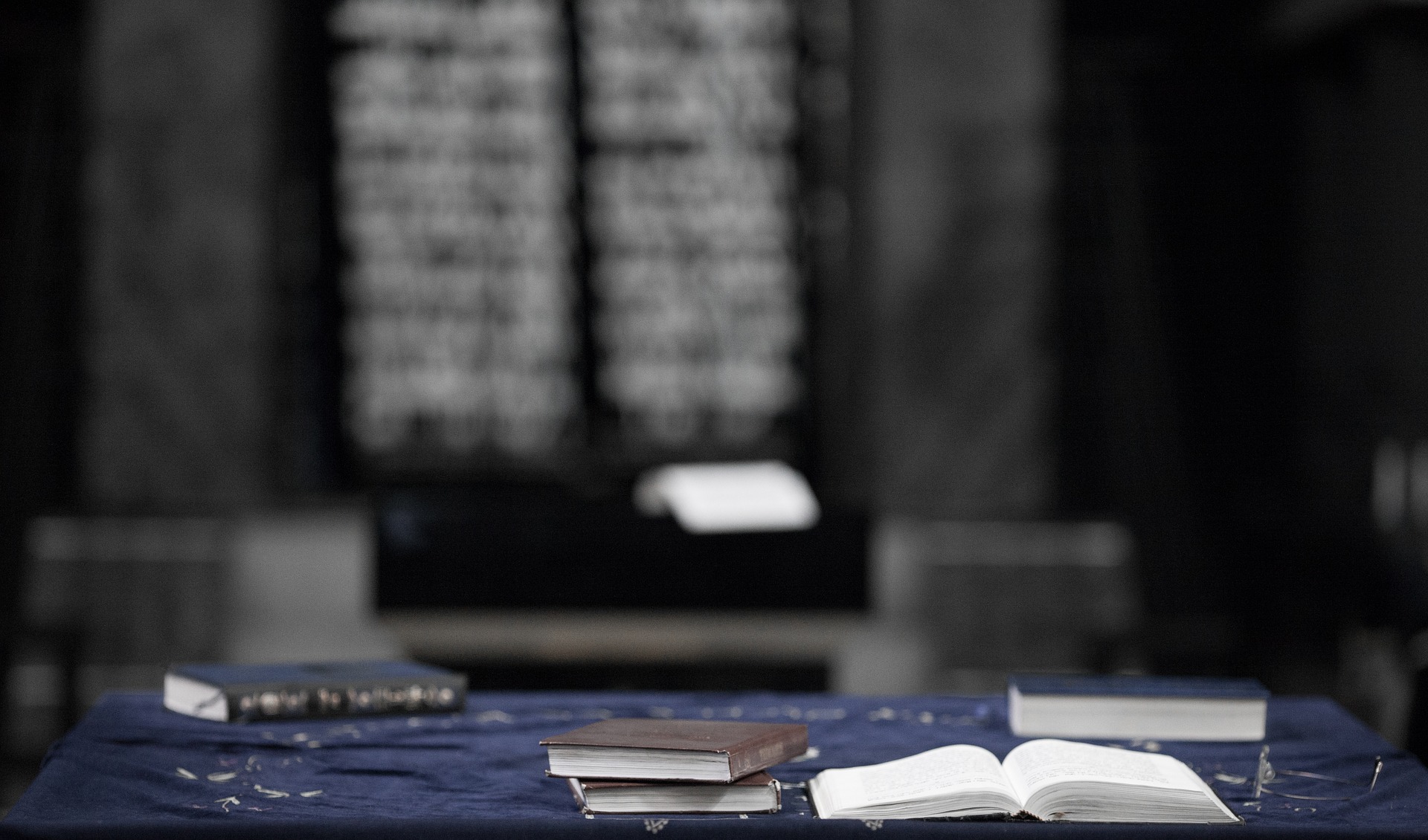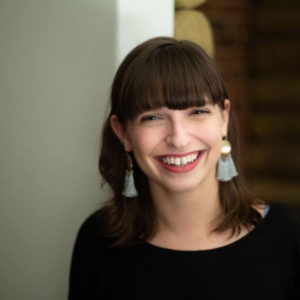A few weeks ago, more than three thousand women gathered in Jerusalem for the first-ever women’s Siyyum Hashas, a celebration of the completion of the seven-year Daf Yomi cycle of daily Talmud study. Watching the livestream from my apartment in New York, I was in tears; the scholars who spoke at the event emphasized the scope of the event and its unprecedented nature in Jewish history. Women spoke about their love for Torah, how they couldn’t live without it.
Watching this room of mostly Orthodox women, I felt more at home than I had felt even at the siyyum I had attended at my own halakhic egalitarian yeshiva, where I am studying for rabbinic ordination. These women felt the impact of their own Torah in the scope of all of Jewish history: it was a miracle and a momentous event for so many women to gather to teach and celebrate Torah. The event celebrated not only the completion of the Daf Yomi cycle but also the revolution in women’s access to Talmud study in recent years. This revolution has been the greatest gift for me.
Before I took on any elements of egalitarian practice, I was studying Talmud. I grew up in a Modern Orthodox community where women’s ritual participation was limited at best, and didn’t see a woman lead a community in prayer or wear tefillin or a tallit until my late teens.
But in high school, I spent two summers immersed in Rabbinic texts at the Drisha Institute, a groundbreaking, formally nondenominational women’s yeshiva based in Manhattan that has been a center of Orthodox feminism.
This wasn’t taboo, exactly — I studied Talmud at my Orthodox high school — but it certainly wasn’t mainstream. It was on the “feminist” end of acceptable, and when I returned home from both summers, many people in my community were bemused as to why I had chosen to spend my time this way; they didn’t understand why a young woman would be interested in spending her free time on Talmud.
While Talmud was on the curriculum once I reached high school, the boys I grew up with began to be taught Gemara in fifth grade. After years of pressure by my parents, the school relented and offered Talmud in eighth grade. But this was short-lived: the teacher began the class by telling us that he was being made to teach us by the school’s administration but he didn’t think it was a good idea. After all, girls were simply less suited to the logical thinking required for Talmud study, and we wouldn’t enjoy it.
He showed us a photocopied page of the Vilna printing of the Talmud, the standard edition used for study. The room of girls panicked — it was un-punctuated! How could we ever hope to learn to read that? The teacher verified our concerns. “Don’t worry,” he said, “this is much too hard. I would never make you do this.” He then distributed punctuated excerpts instead. This was my introduction to Talmud study.
When I began to engage in gender-egalitarian ritual, I largely ceased thinking of Talmud study as revolutionary or controversial. Women wearing tefillin — that was edgy. But Talmud study was mundane, an essential and standard part of the fabric of the communities — first more explicitly feminist parts of Orthodoxy, and then halakhic egalitarian spaces — I was a part of. Women’s Talmud study was the controversial edge when I was younger, but not once I moved religiously leftward.
Women’s Talmud study remains a contentious issue in countless Orthodox communities, and every day women fight to access it. But, having shifted away from those communities, I thought I no longer needed to engage with that — of course I learn Gemara, that’s not exciting!
Several weeks ago, we did a unit on women’s learning in halakhah as part of my rabbinical curriculum. We looked at sources that forbade or discouraged women’s engagement with Torah, sources which were constantly in the background of my education.
Those sources were intimately familiar to me. I expected to be something close to bored: after all, I learn Torah every day, and it was typically entirely uneventful on the gender front. But I was surprised by how much it stung to read the familiar sources. My years of being pushed away from Talmud remained close to the surface — even as I spend my days immersed in Torah I believe I do have a religious obligation to study, the sources conjured years of feeling rejected by that which I love most.
The following week, reviewing material about the laws of milk and meat, I decided to listen to a recorded online class from Yeshiva University’s rabbinical school that covered the same subjects. I found myself surprised when I could easily understand the lecture; I had assumed that it would be too hard for me to follow without at least substantial effort. I was shocked to realize that even after many years of committed Torah study, I still assume that Orthodox men will always be ahead of me by default. I’ve been walking through the world of Torah feeling like I’m playing catch-up. It hasn’t been as easy as I thought to leave behind the lessons I learned at thirteen, the voice asking, “Am I really cut out for this?”
So many Jews take for granted that women can study Rabbinic texts. It’s easy for women’s access to Torah to feel passe, as if the struggle only exists in religious communities far to the right of our own. In egalitarian communities of all orientations, even as leadership and ritual might have glass ceilings, we no longer explicitly consider the question of if or how women can learn Torah. But this is, in the scope of the history of our people, still the beginning of the revolution. Women’s access to rabbinic text is itself still exciting and generative and new, even if in egalitarian spaces we have rightly come to take it for granted. An awareness of that novelty and its opportunities will enable us to engage with this moment with the gravity it deserves.
Of course, the opening of the beit midrash to women has not allowed in all Jewish women. Class is a major barrier to access in many Jewish learning spaces, and Jews of color, trans Jews, and Jews with disabilities are too often turned away, questioned, and denied access to Jewish institutions. We stand at the beginning of a revolution of women’s learning not only because it is new for any women to study Talmud and many other Jewish texts, but because it is an incomplete and unfulfilled step until all Jews can genuinely learn Torah. So many of the women who have been able to study thus far hold privilege in multifaceted ways, which has smoothed our access even as our womanhood has been an obstacle.
The pain that has been part of my experience of interacting with Torah as a woman is an inextricable part of my relationship with Torah, and the same is true for thousands of women who study Talmud today. Even for those who haven’t had to push to access our holy texts, it is still a revolution of unprecedented scope: this is a major proportion of the Jewish people who have been, as a group, denied access to the Talmud, now learning it — and still, this is not the full Jewish people. This most recent Daf Yomi cycle began and ended at a time when women’s Talmud study has become mainstream and accessible enough, after years of activism across different parts of Orthodox and non-Orthodox Jewish communities, for large numbers of women to have participated.
The Torah women are producing and will produce will be shaped by this pain and this newness, and it will be another layer that becomes an inextricable part of the canon. It will be part of the Torah future generations will learn. We are still at the beginning of this period, and it can still feel like a miracle; we will learn more from this moment if we remember that it is nothing less than a revolution, and that we are responsible for helping this revolution reach all Jews. There are centuries and millennia of Torah yet to be taught; we can barely imagine the extent of that which is to come.
Feature image credit: Pixabay.com/mig-ua.

